Home > Company > Tire Safety > Choosing Tires > Replacement Guidance
The best way to know if it’s time to buy new tires for your vehicle is to have them inspected by a professional, but there are ways to check them yourself. To meet legal safety standards in the U.S., a tire’s tread needs to be at least 2/32” deep. If the tires do not meet the 2/32” standard or are approaching not meeting it, you should replace your tires. When replacing tires, it’s important to select the right tire size for your vehicle. Not sure what size you need? Learn more about determining tire size.
Tires should also be free of sidewall damage and irregular wear for optimal performance and safety. It’s also a good idea to learn what types of damage can be repaired vs. replaced so that you can safely extend the life of your tires.
You can evaluate your tires on your own through a visual inspection. Start with the tread — the part of the tire that contacts the road surface. Make sure the tire tread is deep enough and worn evenly all the way around without any irregularities. All DOT-regulated tires feature built-in treadwear indicators, commonly called “wear bars”, that will help you see when the tread is getting low. These indicators can be found in various places throughout the tread and will be even with the tread surface when the tread is worn to two-thirty seconds (2/32) of an inch. You should also examine each tire’s sidewall to ensure there is no visible damage.
You can also use the Penny Test to check your tire tread. This test can be performed in your own driveway in just a few minutes.
The idea of the penny test is to check whether you’ve hit the 2/32” threshold. Here’s how it works:

Check all four tires, especially in areas that look the most worn. If any parts of your tire fail the penny test, it may be time to replace the tire.
Consistent wear around the whole tire is normal. Uneven tread wear could be a sign of improper inflation, wheel misalignment, or a variety of other things. If you see uneven tread wear, you should have a technician inspect your vehicle.
If your tires pass these tests, you may not need to buy new tires just yet. It’s a good idea to reassess the tread every few thousand miles, or once a month, and even more often if you’re putting a lot of wear on your vehicle or driving long distances.
No matter how new your tire is, Bridgestone recommends checking inflation pressure every month and scheduling regular inspections with a pro. After five years, an inspection is essential to determine if a tire is still road-worthy.
After five years, an inspection is essential to determine if a tire is still road-worthy.
We recommend tires that were manufactured 10 years prior (or longer) be taken out of service and replaced with new tires. Same goes for the spare. If it’s 10 years old, it needs to be replaced, even if it appears new.
It’s important to note that the age of a tire is not the only indicator of whether it needs to be replaced. Many tires will need to be replaced before 10 years of age due to routine tread wear and other conditions such as punctures, impact damage, improper inflation, overloading and more. If a tire is worn out or otherwise unserviceable from damage or conditions of use, it should be replaced regardless of when it was produced or purchased.
Another common tire-buying question is if it’s necessary to replace all four tires at once.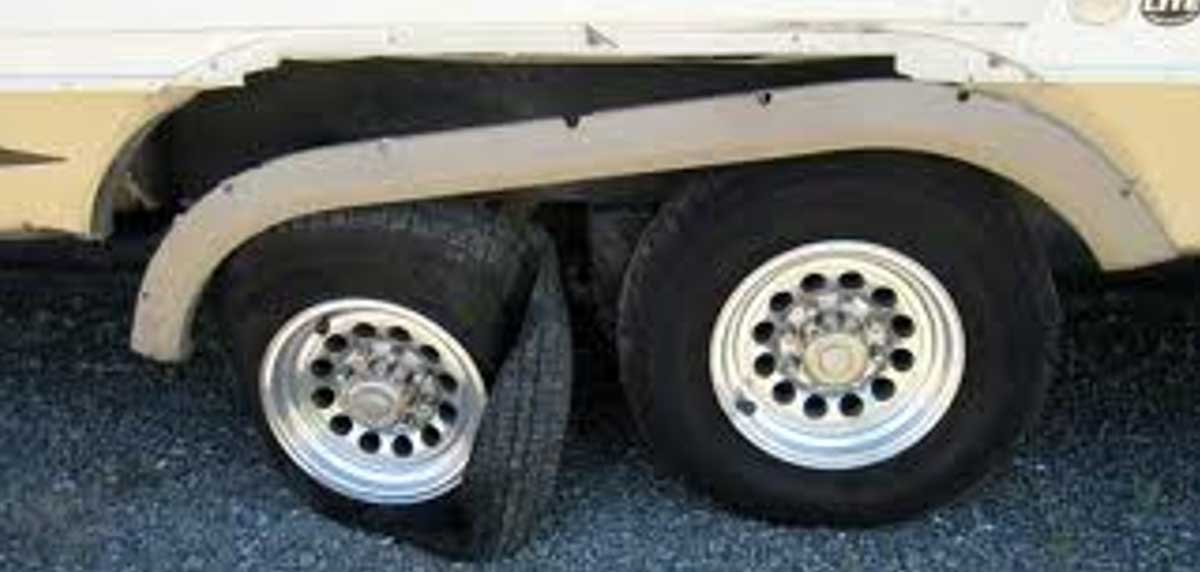 The simple answer is yes. It is recommended to replace all four at once because your tires are key to the performance and handling of your vehicle, it’s important for them to be as identical as possible. If your tires don’t match, one end of your vehicle may not be able to respond as quickly as the other, making it difficult to control. Your tires are what keep your vehicle connected to the road, so having an even surface is vital.
The simple answer is yes. It is recommended to replace all four at once because your tires are key to the performance and handling of your vehicle, it’s important for them to be as identical as possible. If your tires don’t match, one end of your vehicle may not be able to respond as quickly as the other, making it difficult to control. Your tires are what keep your vehicle connected to the road, so having an even surface is vital.
If you are in a situation where you will be replacing fewer than four tires, select tires that are similar to what is currently installed on your vehicle. If you are replacing just two tires, those two tires should only be installed on the rear axle. You should only consider tires that are within the same category as your existing ones.
If you have a vehicle that came equipped with a staggered fitment (different size tires on the front and back) then you should check your vehicle owner’s manual for replacement recommendations.
There are a lot of risks associated with buying used tires.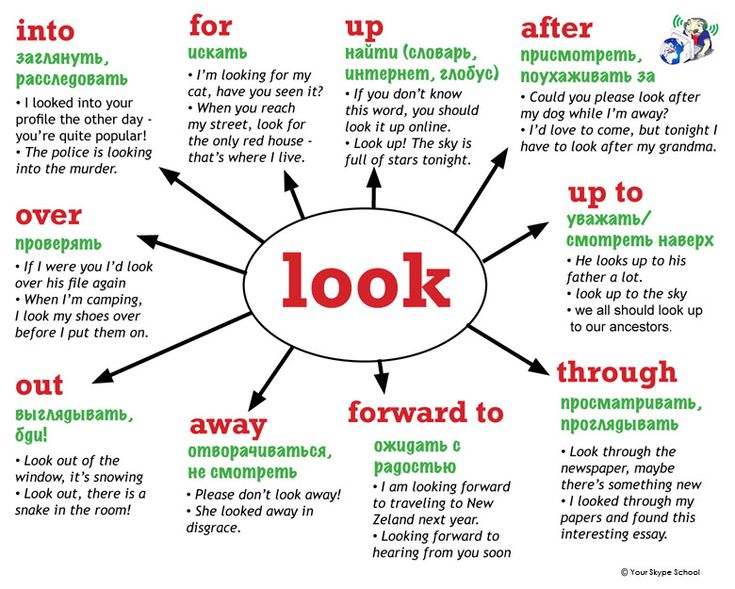 Since you don’t know the history of the tires, it can be difficult to know if they’ve been previously run under inflated, overloaded or have other unseen internal damage which could lead to an unexpected failure. Used tires might also have uneven wear, which can cause noise, vibration or other problems and may need to be replaced much sooner than new tires. It is best to replace tires with new tires of the same category, size, load capacity and speed rating as recommended by your vehicle’s manufacturer.
Since you don’t know the history of the tires, it can be difficult to know if they’ve been previously run under inflated, overloaded or have other unseen internal damage which could lead to an unexpected failure. Used tires might also have uneven wear, which can cause noise, vibration or other problems and may need to be replaced much sooner than new tires. It is best to replace tires with new tires of the same category, size, load capacity and speed rating as recommended by your vehicle’s manufacturer.
When it comes to recalled tires, there is only one position to take. We do not want anyone driving on recalled tires. We are committed to replacing, free of charge, any Bridgestone or Firestone tire (or other brands warranted by Bridgestone) subject to a customer satisfaction, quality and/or safety recall, at any time. The easiest way for consumers to get answers to questions about recalled tires is to call 1-844-293-7514 or locate an authorized Bridgestone or Firestone dealer to examine the tires in question.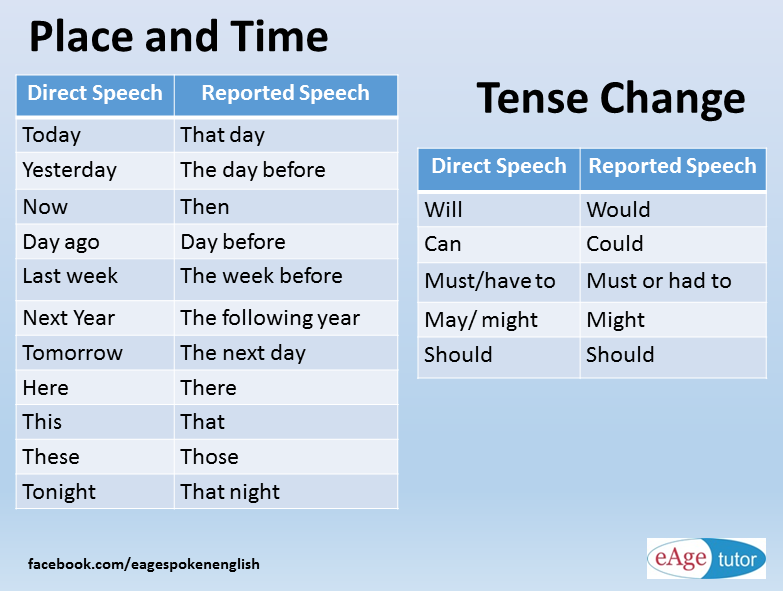 You can also check current tire recalls online at the National Highway Traffic Safety Administration site.
You can also check current tire recalls online at the National Highway Traffic Safety Administration site.
There’s no reason to guess. Talk to a tire dealer or other authorized professional so you can make certain you’re choosing the best tire option for your vehicle. Find out if tire rotation and balancing are included with your new tires. If they are not, see if you can bundle the maintenance service. Ask the dealer to outline the manufacturer’s warranty and replacement options to make certain your new investment is protected in the long run, and inquire about any specials they may be offering. With these tire-buying tips and some trusted ratings in hand, you should be able to confidently pick out new tires.
Bridgestone consistently strives to connect with drivers through our stores, dealers and media campaigns to raise awareness and educate consumers on safe driving and tire safety. We encourage all consumers to learn all they can about tire safety and why it's important to have their tires, including the spare tire, regularly inspected by a qualified professional.
We encourage all consumers to learn all they can about tire safety and why it's important to have their tires, including the spare tire, regularly inspected by a qualified professional.
Position on Recall Awareness and Tire Age
Bridgestone Americas, Inc.
 bridgestoneamericas.com/safety.com to learn about tire safety and why it’s important to have their tires, including the spare tire, regularly inspected by a qualified professional.
bridgestoneamericas.com/safety.com to learn about tire safety and why it’s important to have their tires, including the spare tire, regularly inspected by a qualified professional.Learn about our mission, our achievements, and our ongoing commitments
Read Our Origin Story
We believe everyone should be able to make financial decisions with confidence. And while our site doesn’t feature every company or financial product available on the market, we’re proud that the guidance we offer, the information we provide and the tools we create are objective, independent, straightforward — and free.
And while our site doesn’t feature every company or financial product available on the market, we’re proud that the guidance we offer, the information we provide and the tools we create are objective, independent, straightforward — and free.
So how do we make money? Our partners compensate us. This may influence which products we review and write about (and where those products appear on the site), but it in no way affects our recommendations or advice, which are grounded in thousands of hours of research. Our partners cannot pay us to guarantee favorable reviews of their products or services. Here is a list of our partners.
When the tread depth gets too low or your tires hit the six-year mark, it's time for new rubber.
Many or all of the products featured here are from our partners who compensate us. This may influence which products we write about and where and how the product appears on a page. However, this does not influence our evaluations. Our opinions are our own. Here is a list of our partners and here's how we make money.
Here is a list of our partners and here's how we make money.
While the consensus across the auto industry is that you should consider replacing your tires at least every six years, there’s no magic number for how often you should replace them.
Tires become unsafe when tread becomes too thin, rubber is degraded by time and temperature or their sidewalls are damaged. A flat is an inconvenience, but a blowout or sketchy grip can lead to an accident.
Although tires can be a substantial expense for a car owner to handle at one time, wear and tear — and their replacement — is mostly predictable. Here’s a rundown of how to determine if your tires need to be replaced and common signs that your tires aren’t up to par.
Tires have grooves known as tread that help them grip the road. While most new tires have a tread depth around 10/32nds of an inch, the tread wears down over time. This makes it more difficult to steer your vehicle, reduces traction and increases braking time.
The U.S. Department of Transportation deems tires that have tread at or below 2/32nds of an inch to be unsafe. While your tire technically has enough tread to drive at this point, it can be dangerous to drive your car in certain conditions or for long distances.
There are three ways to figure out your tires’ tread depth:
Tread wear indicators are built into tires and are raised, evenly spaced sections in the grooves of your tire tread. On new tires, they are not as high as the tread. However, when the tread reaches the same level as the indicators, it means it’s time to replace the tires.
Tire tread gauges are relatively cheap tools that let you measure your tread in thirty-seconds of an inch. This will show you the exact measurement of your tire tread.
The penny test lets you estimate tread depth based on where the tread hits a penny. To do this test, take a penny, turn it upside-down, and insert it straight down in the groove of a tire’s tread.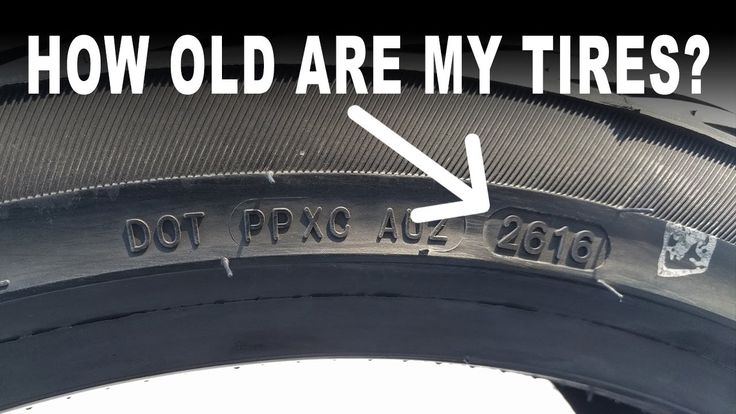 Look straight on at the penny to determine where the tread hits President Lincoln’s profile. If you can see his entire head, you’ve hit the mark and need new tires.
Look straight on at the penny to determine where the tread hits President Lincoln’s profile. If you can see his entire head, you’ve hit the mark and need new tires.
Regardless of how many miles they’ve driven, tires degrade over time and become more prone to failure. Factors like environmental conditions, storage and maintenance can influence how long a tire will last even if it’s only driven a few hundred miles a month.
While there’s no set requirement for when to replace tires according to age, the general recommendation is to replace them six years after the manufacture date and to never drive on tires that are older than 10 years.
Just answer a few questions to get personalized results from our lending partners.
Estimated payoff amount
Of course there are other times when your tires are telling you it’s time for replacement despite what your tread measurement might say.
You moved to a new climate. Some tires are designed for specific conditions such as extreme temperatures. Winter tires, for example, have deeper tread and are meant to be more flexible in cold weather; driving them on warm pavement can wear them down more quickly. If you move to a new climate, pay attention to road conditions and weather patterns to determine if you need different tires.
You’re losing traction. If it feels like your car is slipping or sliding during wet weather, this could be a sign of low tire tread that is failing to channel water away effectively. Because tire tread can wear unevenly, you might not notice that some of your tread has worn thin and is affecting your traction.
Most modern cars activate a warning light when your car loses traction. If you are seeing this warning light more frequently as time goes on, check the condition of your tires.
Your tires aren’t holding pressure like they should. Certain types of tire damage, including debris between the rim and the tire and damage to the sidewall, can cause continuous pressure loss. Some damage might be repairable, but some situations will call for new tires.
Some damage might be repairable, but some situations will call for new tires.
🤓Nerdy Tip
An average of 2% air loss in tires is common for every drop of 10 degrees in outside temperature. So don’t worry if your tire pressure varies a bit when it starts to get colder outside.
About the author: Whitney Vandiver is a writer at NerdWallet currently focusing on small business. Read more
On a similar note...
Get more smart money moves – straight to your inbox
Sign up and we’ll send you Nerdy articles about the money topics that matter most to you along with other ways to help you get more from your money.
In fact, the average life of any tire is 5-7 years, but a lot depends on how the owner treats his car. Aggressive driving, improper seasonal tire storage, unrepaired suspension/balancing problems, incorrect pressure and other errors can significantly shorten tire life. But worn tires can be a serious problem on the road: an increased risk of uncontrolled skidding, hydroplaning, even accidents is the price that drivers and passengers have to pay for using old tires. nine0003
nine0003
Each manufacturer indicates the so-called wear index on the tire profile, which most often looks like the inscription “Treadwear 100” and means a maximum of 48,000 km on a standard road surface (polygon). In a real environment and often not the most ideal roads, this number actually needs to be divided by 1.5 - we get 36,000 km.
By analogy, if the wear resistance index is 150, then this means “factory” 72 thousand km, 200 - 96 thousand km., and so on.
What are the dangers of worn tires on the road:
adhesion to the roadway deteriorates, which leads to an increased likelihood of skidding, accidents, hydroplaning in case of rainy weather;
reduced cross-country ability in off-road conditions;
increases the risk of a tire puncture while driving. nine0003
It is also worth remembering that the issue of tire wear is regulated by traffic rules, and you can get a fine for using “bald” rubber. Knowing what maximum tire wear is acceptable, this is easy to avoid: 1.5-2 mm for summer, and 4-5 mm for winter (a more accurate figure is indicated by the manufacturer).
Knowing what maximum tire wear is acceptable, this is easy to avoid: 1.5-2 mm for summer, and 4-5 mm for winter (a more accurate figure is indicated by the manufacturer).
1. According to the wear indicator on the tire. To find this indicator, you need to inspect the side of the tire and find one of the markings: a triangle, a company logo, a snowflake, or the abbreviation TWI. If the tread has worn down to this indicator, it means that the tire needs to be disposed of urgently. nine0003
2. Many people in the old fashioned way prefer to use a 10-kopeck coin. Insert it into the tread with the inscription "10 kopecks" towards you, and if it is visible, the wear level is too high, you need to replace the tire. This method is convenient, but not entirely accurate: by measuring wear in different parts of the tire in this way, it will be difficult to estimate its unevenness by eye, and this is also an extremely important indicator.
3. It is optimal to use a special gauge, depth ruler or caliper for these purposes. This will allow you to measure the wear of the tread in different parts of the tire with an accuracy of up to a millimeter and understand if there is uneven wear. nine0003
It is optimal to use a special gauge, depth ruler or caliper for these purposes. This will allow you to measure the wear of the tread in different parts of the tire with an accuracy of up to a millimeter and understand if there is uneven wear. nine0003
If measurements show different results in different parts of the tread, it is important to determine exactly how your tires wear in order to understand where and what the operating error is.
If the tread wears more on the sides and the center wears off less, this means that the tire pressure is insufficient and the contact patch with the road is not correct. This leads not only to poor vehicle stability, but also to increased fuel consumption. nine0003
If the tread is worn down the middle but the sidewalls are fine, then your tires are overinflated. Sometimes this is done intentionally in order to save fuel, but in this case, the tires will still have to be changed ahead of schedule.
There is also the possibility of increased wear on the inside or outside of the tread - this indicates an incorrect camber. A visual table with wear options and their causes:
Cracks on the sides of tires can indicate frequent off-road driving, improper storage, low-quality rubber or long service life, as well as incorrect tire pressure.
Bulges or "hernias" on the sides of the tires appear as a result of the side part hitting hard obstacles. Tires with such damage are not recommended. nine0003
Dents on the tread indicate insufficient depreciation and unadjusted camber. Having found such damage, it is necessary to drive the car to the service and make sure that the suspension is in good condition.
Individual wear spots on the tread indicate aggressive driving / braking, skidding with wheel locks, or prolonged parking of the car in one position. nine0003
nine0003
Most often, this is required for the sale and purchase of used tires in order to orient the buyer in the degree of their wear. Many sellers give this figure at random, but this method has nothing to do with the actual assessment of the degree of tire wear. It is also important to understand that a conditional 50% wear for a summer tire is an acceptable value, while 50% wear of a winter tire tread is a sign that the tire cannot be used. Therefore, it is important to know how to accurately determine the percentage of tire wear so as not to get into an unpleasant situation. nine0003
Many people divide the actual tread height by the height of the same, but new tire, and get a certain percentage of wear. This would be correct, if not for one BUT: we cannot physically erase the tread to zero, and the law prohibits the use of tires with a tread below the permitted values.
You can calculate actual tire wear by dividing the difference between the new tire height and the actual tire height by the difference between the new tire tread height and the minimum possible tread height for that tire, and then multiplying this number by 100. nine0003
If it is impossible to find out the height of the same, but with a new tire, use the average values of your tire type:
| Tire type | Average tread height at start of use |
| Winter tires with Scandinavian tread | 10 mm nine0003 |
| Winter with regular or asymmetric tread | 9 mm |
| High-speed winter | 7 mm |
| Summer tires with classic tread nine0085 | 8 mm |
| Summer speed | 7 mm |
You can check summer tires for wear a little less often than winter tires, since in summer the tread depth is not so important for patency.
If you have assessed the condition of your tires on all of the above factors and realized that the tires are worn out, be sure to replace them with new ones as soon as possible.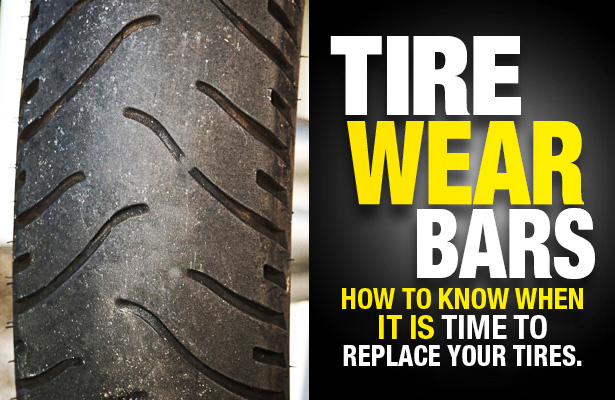 nine0003
nine0003
Driving comfort, handling and safety level depend on the technical condition of tires. Car tires provide traction to the car in various climatic and road conditions. blog.ship-ship.ru
Driving comfort, handling and safety level depend on the technical condition of tires. Car tires provide traction to the car in various climatic and road conditions. nine0003
The tread is the outer layer of the tire. It comes into contact with the road, creates a contact patch and provides traction. The tread pattern differs in volume, consists of blocks, grooves, lamellas of a certain depth.
The tread is responsible for the grip of the wheels on dry, wet, snowy and icy roads. It removes water, dirt and snow from the contact patch. The system of blocks and grooves prevents the effect of hydroplaning, when a water cushion forms between the wheel and the road during rain. nine0003
nine0003
The degree of wear of the tire tread affects the handling, maneuverability, stability of the car, and the length of the braking distance. There are requirements for the depth of the tread pattern. If the outer layer of the tire is worn out, then it is changed.
It is important to understand that worn tires are not able to cope with the tasks:
Tread wear is the main cause of deterioration in braking quality, poor handling and directional stability. At the same time, worn tires show equally unstable behavior on any type of road surface in rain, snow or dry weather.
Winter and summer tires differ in thickness, composition of the rubber compound, the number, shape and size of blocks and grooves.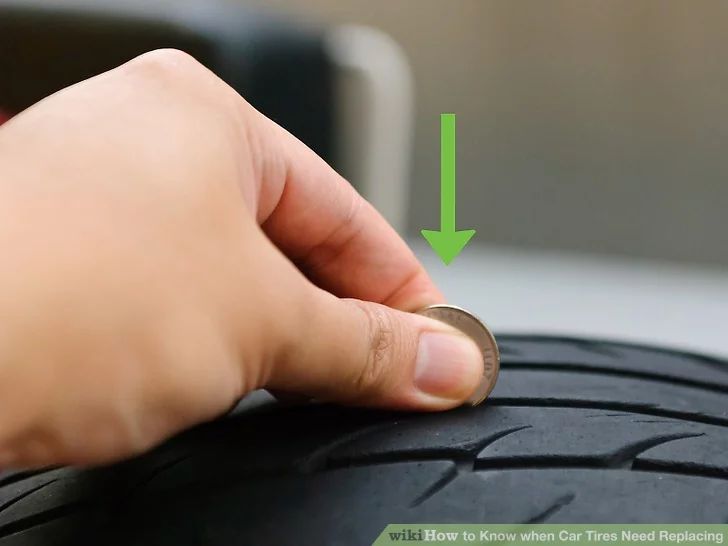 The selection of tires depends on the make and model of the car, body type and class, climatic and road conditions (city, highway, country roads, off-road), speed limit and driving style. nine0003
The selection of tires depends on the make and model of the car, body type and class, climatic and road conditions (city, highway, country roads, off-road), speed limit and driving style. nine0003
The new tires have deep grooves and numerous sipes that provide excellent traction. Manufacturers produce winter tires with three types of tread:
Spikes are used for driving on roads and ice that have not been cleared of snow. The spikes bite into the ice crust and split it, providing excellent traction. But when driving on dry asphalt, the spike loses its working properties. nine0003
Velcro friction tires are suitable for driving on a dry clean road, melted and shallow snow, mud. The main difference between Velcro is the presence of lugs, special grip edges that increase the stability of the wheels on wet road surfaces.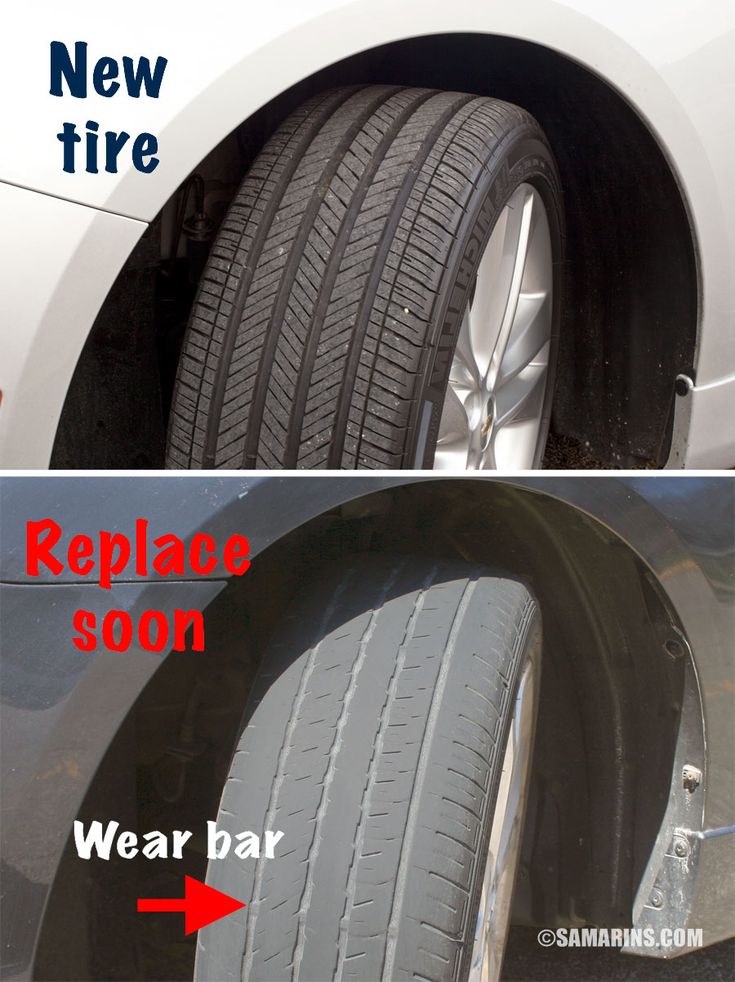
Scandinavian tires are used in the conditions of the northern regions, which are characterized by extreme sub-zero temperatures and snowfalls. The main difference between the Scandinavian tread is wide sipes, massive numerous blocks cut by grooves. nine0003
In modern tire models, the tread height is 9-12 mm. The permissible wear level here will be from 4 to 6 mm. If the wear 'threshold' passes, the tire is changed regardless of how long it lasts.
Important: The tread of a winter tire is always 3-4 mm higher than the summer model. The depth of the Scandinavian tire pattern should also be sufficient - at least 8-9 mm.
The need for replacement will also be indicated by special indicators located at the base of the tire. nine0003
The tread depth of summer tires is 6-8 mm. The minimum tread wear must be at least 1.6 mm.
The tread pattern must be clearly legible. Otherwise, the traction and grip properties of the wheels deteriorate, the tires cannot effectively remove water and dirt from the contact patch, and the effect of aquaplaning is possible.
Otherwise, the traction and grip properties of the wheels deteriorate, the tires cannot effectively remove water and dirt from the contact patch, and the effect of aquaplaning is possible.
For sports cars, the tread height is 12 mm. For SUVs, the height indicator increases by another 5 mm. nine0003
According to the rules of the road, the maximum allowable tread wear is:
The residual wear of the tread for minibuses and buses designed to carry more than 8 passengers is 2 mm. nine0003
In order not to get into an emergency on the road, the car owner should periodically check the wear of the tread pattern. This can be done in the following ways:
Take a measuring tool with a depth gauge - a caliper. Pull out the depth gauge, rest its nose against the base of the drawing. The caliper should rest against the top of the rubber. nine0003
Pull out the depth gauge, rest its nose against the base of the drawing. The caliper should rest against the top of the rubber. nine0003
You will see readings on a mechanical or electronic scale. If the value for summer tires is less than 1.6 mm, such tires need to be replaced urgently. For winter, this figure will be below 4 mm.
To make the reading as accurate as possible, measurements are taken from the base of the figure. It should be smooth, without protrusions.
Take a coin with a face value of two rubles. Put it in the groove. If the ‘meter’ deepened to the word ‘ruble’, the residual depth is 4 mm. If the word 'ruble' has disappeared - the depth is 6 mm. But if the protector hid only the beginning of the 'wreath', then 2 mm of the pattern remained. In this case, play it safe and replace the tires. nine0003
The ‘coin’ method is inaccurate and allows you to find out the approximate depth. It is used before passing the inspection or when buying tires with mileage.
Manufacturers today offer tires with special wear indicators. This is a special part of the drawing: it differs in color, shape, size.
On the surface of tires you can find the following indicators:
Tires don't always wear evenly. Car owners often face such a problem, and here are its main reasons: nine0003
When inflating wheels, follow the manufacturer's recommendations.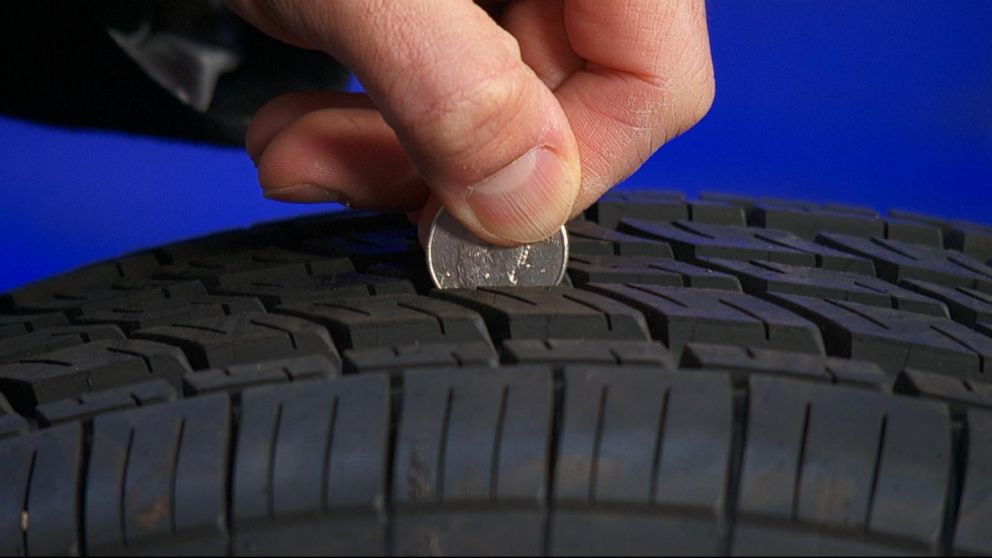 Neglect of this rule will lead to excessive pressure in the tires.
Neglect of this rule will lead to excessive pressure in the tires.
Increased pressure increases noise, increases damage, reduces handling.
If the wheels are poorly inflated, there is a deflection in the central part. Decreased acceleration, increased fuel consumption, increased turning radius. nine0003
Under normal pressure, the rubber wears evenly.
When a wheel hits a hole, the wheel alignment is knocked off the pothole. Car owners are not always able to determine this malfunction on their own and in a timely manner. The indicator is - different wear of the tread.
Excessive camber angle (positive or negative) leads to abrasion of the rubber in the shoulder areas. The cover is bevelled. A car with such wheels cannot move in a straight line, and the driver has to constantly tighten the steering rack. nine0003
Excessive toe angle (positive or negative) results in a 'knocked down' tread.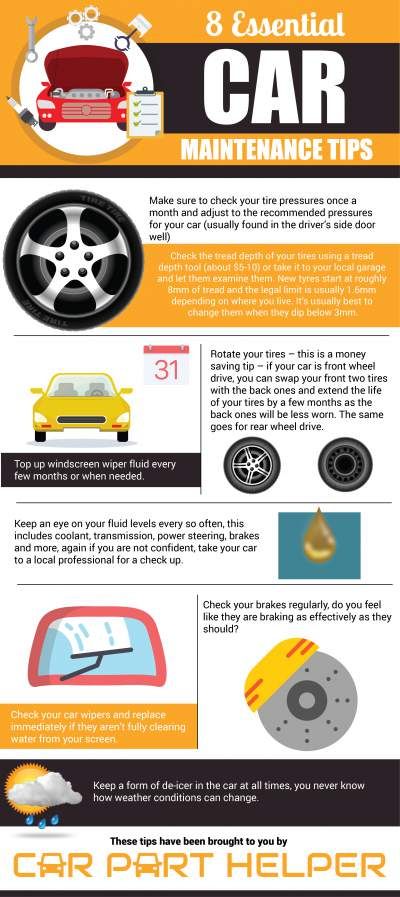 The drawing is assembled into an accordion, forming a bumpy, rib-like surface.
The drawing is assembled into an accordion, forming a bumpy, rib-like surface.
Due to defects in tires or rims, it is impossible to properly balance the wheels. Such a ‘malfunction’ leads to uneven wear, poor handling and vehicle stability. nine0003
The first sign of defective rubber is the appearance of shocks, the beating of the steering column.
Suspension condition should be checked annually. Worn parts or failure of this part of the undercarriage of the machine will also lead to uneven tire wear.
Tires with residual wear of the tread pattern, rubber with cracks and cuts are subject to replacement. nine0003
It is important to remember that tires are subject not only to abrasive wear, but also lose their performance under the influence of climatic conditions, exposure to road dust, reagents, and high loads.